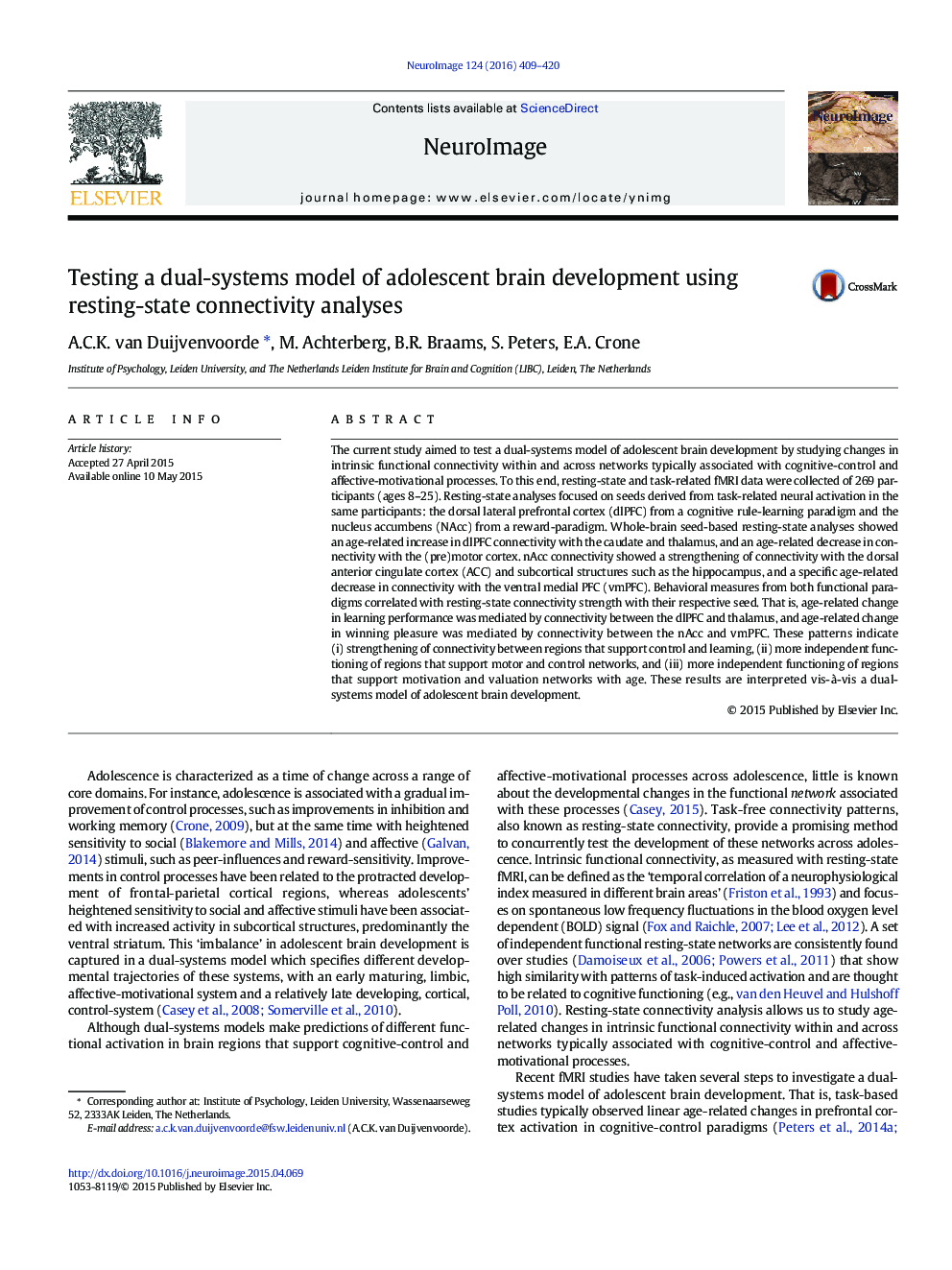| کد مقاله | کد نشریه | سال انتشار | مقاله انگلیسی | نسخه تمام متن |
|---|---|---|---|---|
| 6024293 | 1188658 | 2016 | 12 صفحه PDF | دانلود رایگان |
- We tested age-related changes in intrinsic functional connectivity across adolescence.
- Strengthening of subcortical and prefrontal-cortical connections was observed over age.
- Increasing independence of prefrontal and motor connections was observed over age.
- These changes in functional connectivity strength related to changes in behavior.
- These findings highlight neural circuit changes across adolescence.
The current study aimed to test a dual-systems model of adolescent brain development by studying changes in intrinsic functional connectivity within and across networks typically associated with cognitive-control and affective-motivational processes. To this end, resting-state and task-related fMRI data were collected of 269 participants (ages 8-25). Resting-state analyses focused on seeds derived from task-related neural activation in the same participants: the dorsal lateral prefrontal cortex (dlPFC) from a cognitive rule-learning paradigm and the nucleus accumbens (NAcc) from a reward-paradigm. Whole-brain seed-based resting-state analyses showed an age-related increase in dlPFC connectivity with the caudate and thalamus, and an age-related decrease in connectivity with the (pre)motor cortex. nAcc connectivity showed a strengthening of connectivity with the dorsal anterior cingulate cortex (ACC) and subcortical structures such as the hippocampus, and a specific age-related decrease in connectivity with the ventral medial PFC (vmPFC). Behavioral measures from both functional paradigms correlated with resting-state connectivity strength with their respective seed. That is, age-related change in learning performance was mediated by connectivity between the dlPFC and thalamus, and age-related change in winning pleasure was mediated by connectivity between the nAcc and vmPFC. These patterns indicate (i) strengthening of connectivity between regions that support control and learning, (ii) more independent functioning of regions that support motor and control networks, and (iii) more independent functioning of regions that support motivation and valuation networks with age. These results are interpreted vis-Ã -vis a dual-systems model of adolescent brain development.
Journal: NeuroImage - Volume 124, Part A, 1 January 2016, Pages 409-420
